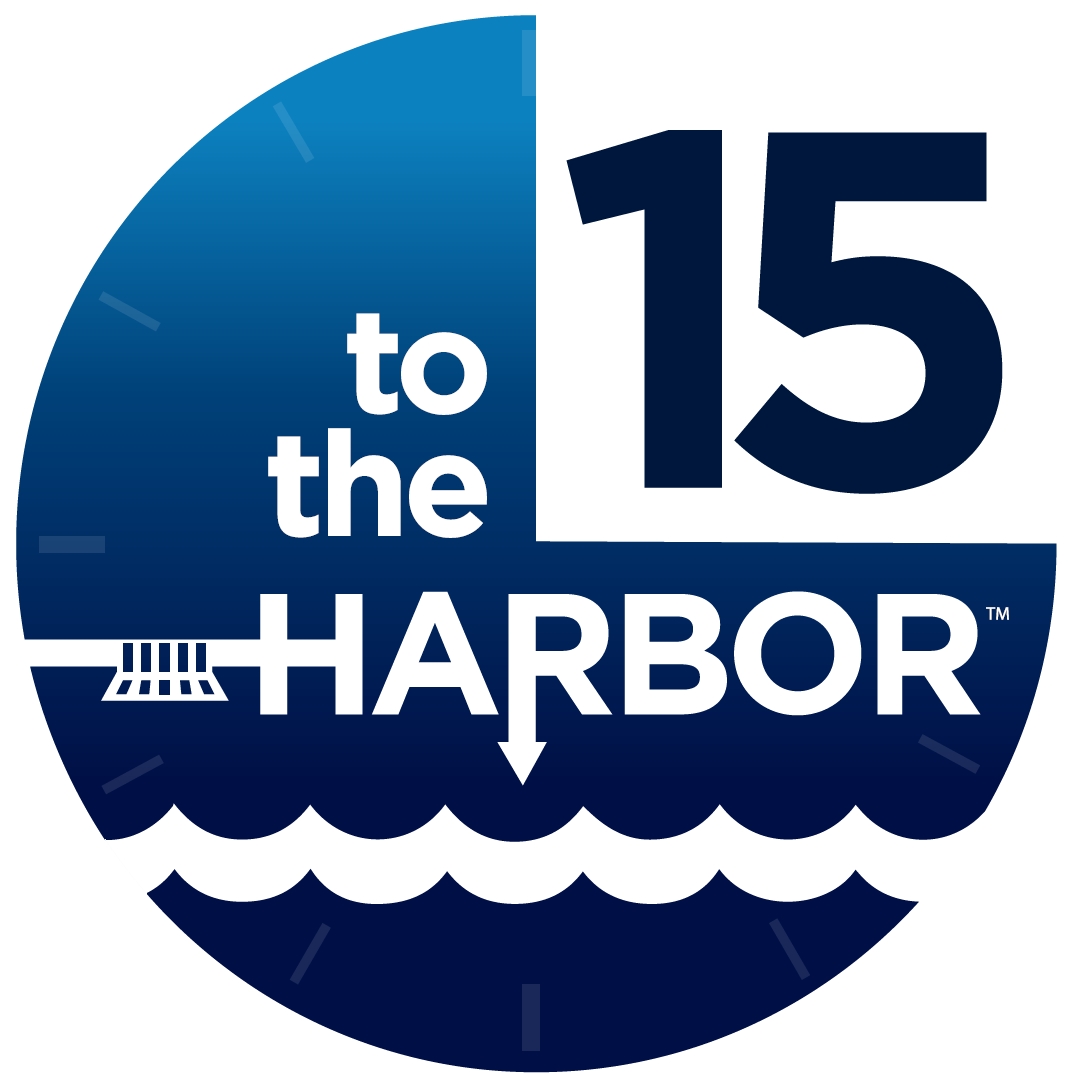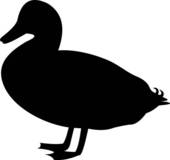Stormwater
 What is stormwater?
What is stormwater?
Stormwater is water from rain or melting snow that does not soak into the ground. It flows from rooftops, over paved areas, bare soil, and sloped lawns. As it flows, stormwater runoff collects and transports animal waste, litter, salt, fertilizers, pesticides, oil & grease, soil, and other pollutants. Those contaminants then flow into storm drains and underground pipes towards recharge basins or waterways.
Polluted stormwater runoff may impact streams, ponds, and other waterways in a variety of ways. For example, nutrients such as phosphorous and nitrogen (found in fertilizers) can promote the overgrowth of algae, deplete oxygen in the waterway, and be harmful to other aquatic life. Toxic compounds can kill fish and other aquatic life. Bacteria from human and animal wastes can make waterbodies unsafe for swimming, fishing, and shellfishing.
In Port Jefferson, it takes less than 15 minutes for polluted stormwater to travel, untreated, from a storm drain to Port Jefferson Harbor.
If stormwater is able to percolate into the ground, the Earth naturally filters out most of the pollutants. As a result, stormwater is not only cleaner, but there is less of it. The key is to capture rain where it falls so it is able to drain into the ground. There are multiple ways we can help this process, such as using rain barrels, rain gardens, and porous pavement.
Another key to reducing stormwater pollution is by eliminating pollutants at their source. Here are simple tips that everyone can do to help reduce the amount of pollutants that are carried into Port Jefferson Harbor, as well as other ways to improve water quality:
![]() PET WASTE
PET WASTE
Pick up pet waste and dispose in a trash can;
don’t leave it on the ground.
![]() FERTILIZERS
FERTILIZERS
When using fertilizers, choose phosphorous-free fertilizers and always apply according to instructions.
![]() HAZARDOUS WASTE
HAZARDOUS WASTE
When using fertilizers, choose phosphorous-free fertilizers and always apply according to instructions.
![]() WASHING YOUR CAR
WASHING YOUR CAR
Wash your car on the lawn or on gravel, not your driveway.
![]() SWIMMING POOL DISCHARGES
SWIMMING POOL DISCHARGES
Due to high chlorine levels in swimming pools, draining swimming pools can cause fish kills and other harmful environmental impacts. De-chlorinate the water prior to pumping out the water.
 DO NOT FEED WATERFOWL
DO NOT FEED WATERFOWL
Feeding creates numerous problems, not only for people, but also for the birds. Well-intentioned people erroneously believe that feeding is beneficial to waterfowl, but it often has negative ecological, environmental, and social consequences.
 NATIVE PLANTS
NATIVE PLANTS
Native plants are adapted to the local climate, soils, and insects; therefore, they require little or no additional fertilizers, pesticides, or irrigation.
 WINTER DE-ICING
WINTER DE-ICING
Instead of rock salt, use less harmful deicers such as calcium magnesium acetate or sodium / potassium acetate.
![]() BOAT PUMP-OUT FACILITIES
BOAT PUMP-OUT FACILITIES
The Port Jefferson Harbor Complex and Long Island Sound are designated as No Discharge Zones. Three pump-out facilities are located in the Harbor to collect boat sewage.
Publications and Materials
Informing residents, businesses, and municipal employees about potential water quality impacts that may be caused by polluted stormwater runoff is key to our stormwater program. Below is a list of publications, geared toward the general public, that outline potential impacts from polluted stormwater runoff and/or steps the community can take to reduce those pollutants.
General Stormwater Publications
Lets Talk About Poop – Learn how you can greatly improve water quality in Port Jefferson Harbor and Mt. Sinai Harbor by picking up after your pets, resisting the urge to feed waterfowl, and properly disposing of sanitary waste from your boat.
Boater’s Guide to No-Discharge Zones and Pump-Out Facilities – Boater’s Guide to No-Discharge Zones and Pump-Out Facilities – The Port Jefferson Harbor Complex and Long Island Sound are designated as No Discharge Zones; therefore, overboard discharge of boat sewage into these waters is prohibited. Learn more about No Discharge Zones and boat sewage pump-out facilities available in Port Jefferson Harbor.
A Citizen’s Guide to Curbing Polluted Runoff – This short brochure provides tips on a wide variety of ways to prevent stormwater pollution.
Animal Waste and Water Quality – Animal waste in stormwater runoff is one source of pathogens in Port Jefferson and Mt. Sinai Harbors. Learn about the affects of animal waste on water quality and ways to keep animal waste from entering our streams and harbors.
Managing Stormwater Runoff-in Port Jefferson– This leaflet provides a general overview of the stormwater management efforts in Port Jefferson.
Pathogens Fact Sheet – Pathogens are viruses, bacteria, algae, and protozoans that cause diseases in humans, other animals or plants. As a result of pathogens from polluted stormwater runoff, Port Jefferson and Mt. Sinai Harbors are listed as Impaired Waterbodies on the NYSDEC’s Section 303(d) list.
Stormwater Frequently Asked Questions – Find out answers to frequently asked questions about stormwater.
Do Not Feed Wild Waterfowl – Waterfowl are wild birds that can locate natural food sources throughout the year. Learn about why supplemental feeding by people is unnecessary and potentially harmful to waterfowl.
Around the Home / Business Stormwater Publications
Landscaping, Gardening & Pest Control – Landscaping and garden maintenance can be major sources of storm water pollution. Learn about tips on landscaping, lawn & garden maintenance, and alternatives to pesticides to reduce stormwater pollution from these activities.
Recommended Native Plants for Port Jefferson – Native plants are adapted to the local climate, soils, and insects; therefore, they require little or no additional fertilizers, pesticides, or irrigation. Learn about which trees, shrubs, ornamental grasses, flowers, and ferns are native to Port Jefferson.
Caring for Your Septic System – Most homes in Port Jefferson are connected to on-site septic systems (septic tank and/or cesspools) rather than the sanitary sewer system. When nitrogen, phosphorous, and pathogens are discharged from septic systems into groundwater, they represent non-point sources of pollution into our streams and harbors. Learn more about the impacts of septic system on the environment and how to properly care for your septic system.
Swimming Pool Discharges – Due to high chlorine levels in swimming pools, draining swimming pools can cause fish kills and other harmful environmental impacts. Learn about how to properly discharge swimming pool water from this NYSDEC publication.
Winter Maintenance and De-Icing – Salt and sand have traditionally been perceived as the cheapest and most effective materials for de-icing driving and walking surfaces. Learn about the hidden impacts that can detract from their overall effectiveness and how to choose the right ice melting product.
Restaurants and Food Handling Facilities – Food handling facilities, including coffee shops, restaurants, bakeries, and bars, must not allow the discharge of waste-water, grease, food-related wastes, and other materials from entering into the storm drains. Learn about Best Management Practices and educate your employees to prevent wastes from entering the storm drains.
Household Hazardous Waste Publications
Automotive Products Disposal – 2 page NYSDEC brochure on disposal of waste automotive products (i.e., oil, antifreeze).
Cleaning Products Disposal – 2 page NYSDEC brochure on disposal of household cleaning products.
Managing and Disposing of Household Hazardous Waste – 17 page NYSDEC Guide.
Pesticide Disposal – 2 page NYSDEC brochure on pesticide disposal.
Paint-Disposal – 3 page NYSDEC brochure on disposal of latex, oil based, and aerosol paint.
Solvents Disposal– 2 page NYSDEC brochure on solvent disposal (paint removers, degreasers).
Water Quality Data
Each MS4 is required to provide data on water quality trends related to stormwater. For the purpose of reducing pathogen loading in Port Jefferson Harbor, two parameters (fecal coliform and total coliform) were selected to create water quality trend charts. In general, the downward trends of fecal coliform and total coliform concentrations in the Harbor suggests that progress is being made toward meeting the goals of the Total Maximum Daily Loads (TMDL) for pathogens. The most recent Water Quality Trends report is provided below:
Water Quality Trends – PJ Harbor – 2021
Where can I get information on the Village’s stormwater management program?
- Each year, the Village must submit an annual report to update the NYSDEC on the activities of its program to demonstrate that it is following the requirements of the Permit. The most recent annual reports are provided below.
2022-2023 Annual Stormwater Report
2021-2022 Annual Stormwater Report
2020-2021 Annual Stormwater Report
2019-2020 Annual Stormwater Report
2018-2019 Annual Stormwater Report
2017-2018 Annual Stormwater Report
2016-2017 Annual Stormwater Report
2015-2016 Annual Stormwater Report
2014-2015 Annual Stormwater Report
2013-2014 Annual Stormwater Report
2012-2013 Annual Stormwater Report
2011-2012 Annual Stormwater Report
2010-2011 Annual Stormwater Report
2009-2010 Annual Stormwater Report[
Storm Sewershed Map
- Each MS4 is required to provide a map of the storm drains and to have a map of the storm sewershed. The maps are provided below.
Storm Sewershed Map[/vc_column_text][/mpc_accordion_tab][/mpc_accordion][/vc_column][vc_column width=”1/2″ css=”.vc_custom_1466529343386{margin-top: 5% !important;margin-right: 2% !important;margin-bottom: 5% !important;margin-left: 2% !important;padding-top: 2% !important;padding-right: 2% !important;padding-bottom: 2% !important;padding-left: 2% !important;background-color: #75cdde !important;border-radius: 5px !important;}”][vc_column_text]
Stormwater FAQ
Q. Where does the storm drain go?
A. Water that flows down roads, streets, and parking lots goes into a storm drain. Some drain into a leaching pool structure or recharge basin (sump), which then leaches into the ground. Other storm drains in the downtown area flow directly to Old Mill Creek or Port Jefferson Harbor.
Q. What is the purpose of the storm drain system?
A. Its purpose is to prevent flooding of roads and parking lots by quickly and efficiently transferring rain water into the ground or to Port Jefferson Harbor.
Q. Why are we stenciling or adding markers to storm drains with a message?
A. Storm drain stenciling and marking are a great way to remind people that storm drains are for clean rain water only. It is a visual reminder not to dump garbage or pollutants into the storm drains since these may end up in Port Jefferson Harbor.
Q. What’s the difference between putting water down the storm drain and putting water down the toilet or sink?
A. The sanitary sewer (toilets and sinks) and storm drain system are two completely different systems. The water that goes down sinks or toilets in homes and businesses flows to the sewage treatment plant on the west side of Port Jefferson Harbor, where it is treated before its release to the Harbor. Water that flows down roads, streets, and parking lots in the downtown area flow directly to the Harbor. This water picks up garbage pollutants along the way and does not receive any treatment to remove pollutants.
Q. Who fixes clogged storm drains?
A. The Village of Port Jefferson Highway Department at 631-473-4733.
Q. Why shouldn’t yard trimmings and soil go into the storm drain?
A. When natural materials, such as yard trimmings, break down, oxygen is drawn from the water. A lot of natural debris decomposing in water will deplete the water of oxygen needed by fish.
In addition, pesticides, oil leaked onto roads, pet waste, and other pollutants are scoured from all paved surfaces throughout our Village and are washed ultimately into Port Jefferson Harbor.
Q. Why isn’t storm water treated before it goes into Old Mill Creek or the Harbor?
A. Each storm drain goes to one of the twenty outfalls that discharge to Old Mill Creek or Port Jefferson Harbor. As a result, storm water is not collected into one location where it can be cleaned. Preventing pollution at the source is a much more effective and less costly way to prevent storm water pollution.
Q. What do I do if I see someone dumping something other than rain water down a storm drain?
A. Call Code Enforcement at 631-774-0066.
Q. What do I do if I see water and mud flowing from a construction site onto the street?
A. Call the Building Department at 631-473-4744.
Q. If I leave a complaint, will my name and address be kept confidential?
A. Yes, all information will be kept confidential.
STORMWATER CONTACT INFORMATION
- To report a Stormwater / Water Quality concern such as: Dumping into a drain, Wastewater discharge into a storm drain, Complaint of illegal dumping into the storm sewer system or waterway, or Stormwater runoff containing soil/silt from a construction site draining into the street or a waterway:
- Please call Village Code at (631) 774-0066 or complete either the Illicit Discharge Reporting Form or Construction Activity Reporting Form. The form can be dropped off or mailed to Village Hall (Stormwater Management Coordinator, c/o Village Clerk, Incorporated Village of Port Jefferson, 121 West Broadway, Port Jefferson, NY 11777) or e-mailed to clerk@portjeff.com
- To report a drainage issue (flooded street, storm drain filled with sand/silt) please call the Department of Public Works at (631) 473-4733.
- General questions or comments about this site or stormwater can be sent to: trustee_kassay@portjeff.com
